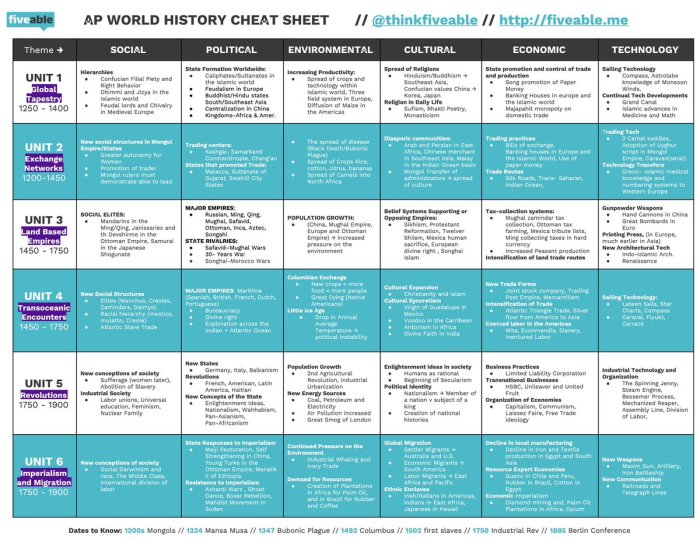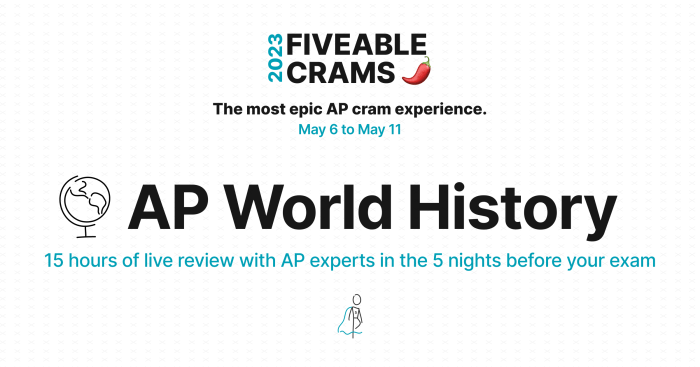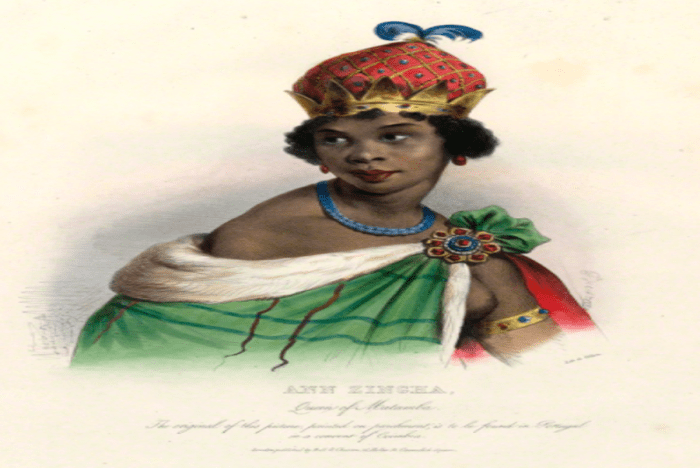Embark on a journey through Fiveable AP World Unit 3: Global Interactions, where we delve into the transformative connections that shaped the course of human history. From the Silk Road to the Columbian Exchange, we’ll explore how these interactions fostered the spread of ideas, technologies, and cultures, leaving an indelible mark on civilizations worldwide.
Throughout this unit, we’ll uncover the key concepts and themes that illuminate the complexities of global interactions. We’ll examine case studies, analyze historical documents, and engage with diverse historiographical perspectives to gain a comprehensive understanding of this pivotal era.
Fiveable AP World Unit 3: Global Interactions

Global interactions during this time period were characterized by increased trade, travel, and cultural exchange. These interactions had a profound impact on the development of different regions, leading to the spread of ideas, technologies, and cultures.
Trade and Commerce
Trade routes such as the Silk Road and the Indian Ocean trade network facilitated the exchange of goods and ideas between different parts of the world. This led to the spread of new agricultural techniques, manufacturing processes, and artistic styles.
For example, the introduction of gunpowder from China to Europe revolutionized warfare, while the Columbian Exchange brought new crops and livestock to both the Americas and Europe.
Travel and Exploration, Fiveable ap world unit 3
Advances in shipbuilding and navigation technology enabled increased travel and exploration. European explorers embarked on voyages of discovery, leading to the colonization of the Americas and the establishment of global empires. These interactions brought different cultures into contact, resulting in cultural exchange and the spread of new ideas.
Cultural Exchange
Global interactions also facilitated the spread of religious and philosophical ideas. The spread of Buddhism from India to China and Japan, and the expansion of Christianity and Islam, had a significant impact on the development of these regions. Cultural exchange also led to the emergence of new artistic styles and the development of new technologies.
Fiveable AP World Unit 3 covers a vast amount of material, so it’s important to have a solid study guide. Luckily, there are many resources available online, including daance study guide – pdf . This guide provides a comprehensive overview of the unit’s content, with clear explanations and helpful examples.
It’s a great resource to use alongside your textbook and class notes. With the help of this guide, you’ll be well-prepared for the AP World Unit 3 exam.
Key Concepts and Themes
Fiveable AP World Unit 3 explores the transformative nature of global interactions throughout history, from the ancient world to the present. Key concepts and themes that emerge from this unit include:
Interconnectedness and Exchange
Global interactions have fostered connections between diverse cultures and regions, leading to the exchange of ideas, technologies, and goods. The Silk Road, for example, facilitated the transmission of Buddhism from India to China, while the Columbian Exchange brought new crops and diseases to both the Americas and Europe.
Diffusion and Transformation
Ideas, technologies, and cultural practices spread across the globe, often undergoing significant transformation in the process. The concept of democracy, originating in ancient Greece, evolved into distinct forms in different societies, reflecting local contexts and values.
Environmental Interactions
Human activities have profound effects on the environment, both locally and globally. The Industrial Revolution, for instance, led to increased air pollution and deforestation, while the rise of global trade facilitated the spread of invasive species.
Power Dynamics and Inequality
Global interactions have often been shaped by power dynamics and inequality. Imperialism, colonialism, and the slave trade have created vast disparities in wealth, resources, and political influence between nations and regions.
Continuity and Change
While global interactions have brought about significant changes, certain patterns and structures have persisted over time. Trade networks, for example, have existed since ancient times, albeit in evolving forms.
Significance of These Concepts and Themes
Understanding these key concepts and themes is crucial for comprehending the development of global interactions and their impact on world history. They provide a framework for analyzing the complex relationships between societies and the forces that have shaped our interconnected world.
Case Studies: Fiveable Ap World Unit 3
The period of global interactions from 1450 to 1750 witnessed numerous significant interactions between different regions of the world. These interactions had profound causes and consequences, shaping the course of world history. By examining specific case studies, we can gain valuable insights into the dynamics of these interactions and the lessons they offer.
Columbian Exchange
The Columbian Exchange, initiated by Christopher Columbus’s voyages, was a transformative event that connected the Americas with Europe, Africa, and Asia. This exchange led to the transfer of plants, animals, and diseases between these regions, having far-reaching consequences.
- Causes:European exploration and colonization, driven by economic and political motives.
- Consequences:Introduction of new crops (e.g., maize, potatoes) to Europe, contributing to population growth; spread of European diseases (e.g., smallpox) to the Americas, causing widespread devastation.
- Lessons:The interconnectedness of the world and the potential for both positive and negative outcomes from global interactions.
Historical Documents

Primary and secondary source documents offer invaluable insights into the events and processes of Fiveable AP World Unit 3. They provide firsthand accounts, perspectives, and data that help us understand the complexities of global interactions during this time period.
Strengths of Historical Documents
* Authenticity:Primary sources provide direct evidence from the past, offering an unfiltered glimpse into the thoughts and actions of individuals and societies.
Diversity of Perspectives
Documents can come from various sources, representing different perspectives and experiences, allowing historians to triangulate information.
Historical Context
Documents help establish the context and circumstances of historical events, providing insights into the social, economic, and political forces at play.
Limitations of Historical Documents
* Bias and Subjectivity:Documents may reflect the biases or limited perspectives of their authors, potentially distorting the historical record.
Incomplete or Fragmented
Historical documents may be incomplete or fragmented, leaving gaps in our understanding of events.
Interpretation Challenges
Interpreting documents requires careful analysis and consideration of the context and author’s intent, which can be subjective.
Examples of Primary and Secondary Source Documents
* Primary Sources:Letters, diaries, treaties, speeches, artwork, artifacts
Secondary Sources
Textbooks, historical accounts, documentaries, research papers
Historiography and Interpretations

The historiography of Fiveable AP World Unit 3 reflects the diversity of perspectives and approaches that historians have taken in studying this complex and multifaceted period. These approaches have shaped our understanding of this time period, influencing the way we interpret events, identify key trends, and draw conclusions.
Different Historiographical Approaches
One of the most influential historiographical approaches to Fiveable AP World Unit 3 is the*Eurocentric approach, which emphasizes the role of Europe in shaping global interactions during this period. This approach has been criticized for its tendency to downplay the agency of non-European actors and for perpetuating a narrative of European superiority.Another
important historiographical approach is the*global approach, which seeks to provide a more comprehensive and interconnected view of global interactions. This approach emphasizes the interconnectedness of different regions of the world and the ways in which events in one region could have significant impacts on other regions.The*comparative
approach is another useful historiographical tool that allows historians to compare and contrast different societies and civilizations. By examining similarities and differences between different cultures, historians can gain a deeper understanding of the factors that shaped their development and interactions.
Strengths and Weaknesses of Different Interpretations
Each historiographical approach has its own strengths and weaknesses. The Eurocentric approach can provide a detailed and nuanced understanding of European history, but it can also lead to a distorted view of global interactions. The global approach can provide a more comprehensive view of global interactions, but it can sometimes be difficult to synthesize the experiences of different regions into a coherent narrative.
The comparative approach can be useful for identifying similarities and differences between different cultures, but it can also be difficult to generalize findings from one culture to another.Ultimately, the best way to understand Fiveable AP World Unit 3 is to draw on a variety of historiographical approaches.
By considering different perspectives and interpretations, historians can gain a more comprehensive and nuanced understanding of this complex and multifaceted period.
Connections to Other Units

Unit 3 of Fiveable AP World History builds on and complements the content of other units in the curriculum, providing a comprehensive understanding of world history. The unit examines global interactions and the interconnectedness of different regions, connecting historical events and processes across time and space.
Unit 1: Foundations of Civilization
Unit 3 builds on the foundations established in Unit 1 by exploring how early civilizations interacted with each other and developed trade networks. The study of the Silk Road and the Indian Ocean trade system in Unit 3 demonstrates the continuity of these connections over time.
Unit 2: Medieval Times
Unit 3 further explores the global interactions that occurred during the medieval period. The Mongol Empire’s conquests and the spread of Islam had a profound impact on trade, cultural exchange, and the development of new technologies. These connections laid the groundwork for the global transformations that would occur in later centuries.
Unit 4: Early Modern Times
Unit 3 provides context for the European exploration and colonization of the Americas and other regions during the early modern period. The unit examines the impact of these interactions on both the colonizers and the indigenous populations. It also explores the rise of global trade and the development of new economic systems.
Unit 5: Industrial Revolution
Unit 3 connects to Unit 5 by examining the impact of the Industrial Revolution on global interactions. The increased production and consumption of goods led to new trade patterns and the expansion of European empires. The unit also explores the social and cultural changes that accompanied these economic transformations.
Questions and Answers
What is the main focus of Fiveable AP World Unit 3?
Fiveable AP World Unit 3 explores the major global interactions that occurred during a specific time period, examining their impact on the development of different regions and the spread of ideas, technologies, and cultures.
How does Fiveable AP World Unit 3 connect to other units in the AP World History curriculum?
Fiveable AP World Unit 3 builds on and complements the content of other units in the AP World History curriculum, providing a deeper understanding of the interconnectedness of world history and the global forces that have shaped human societies.